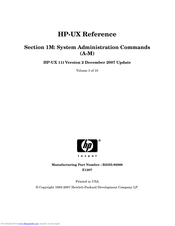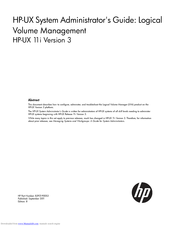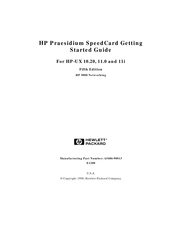Hp HP-UX 11i Manuals
Manuals and User Guides for Hp HP-UX 11i. We have 4 Hp HP-UX 11i manuals available for free PDF download: Administration Manual, Administrator's Manual, Installation And Update Manual, Getting Started Manual
Advertisement
Advertisement
HP HP-UX 11i Getting Started Manual (50 pages)
Praesidium SpeedCard
Brand: HP
|
Category: Computer Hardware
|
Size: 0.33 MB
Table of Contents
Advertisement



